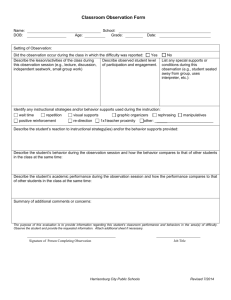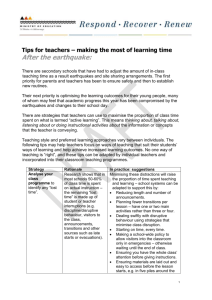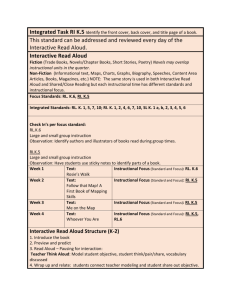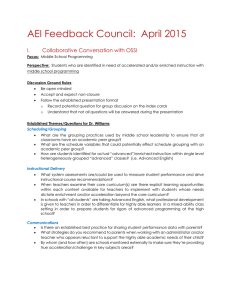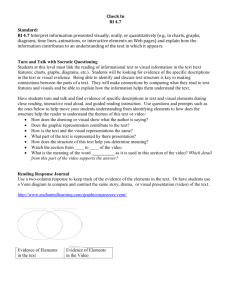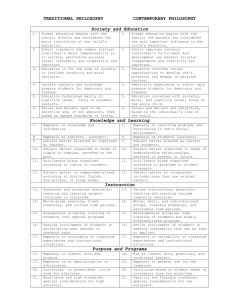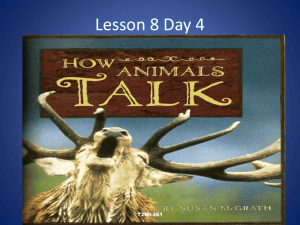Best Practice Checklists
advertisement
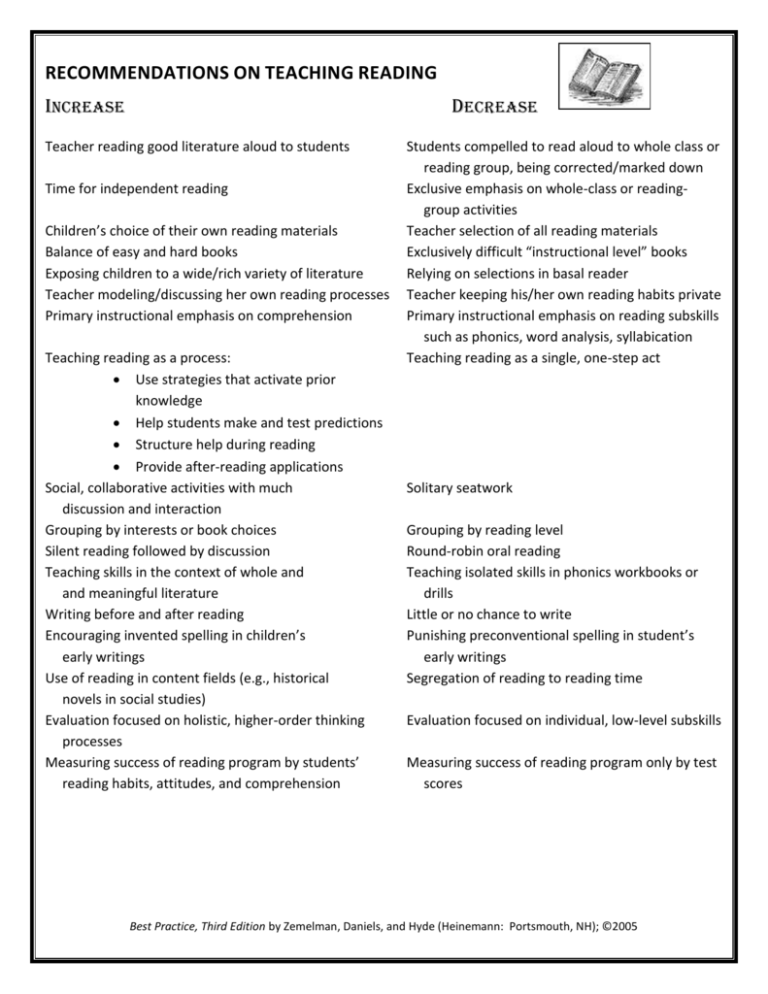
RECOMMENDATIONS ON TEACHING READING INCREASE DECREASE Teacher reading good literature aloud to students Time for independent reading Children’s choice of their own reading materials Balance of easy and hard books Exposing children to a wide/rich variety of literature Teacher modeling/discussing her own reading processes Primary instructional emphasis on comprehension Teaching reading as a process: Use strategies that activate prior knowledge Help students make and test predictions Structure help during reading Provide after-reading applications Social, collaborative activities with much discussion and interaction Grouping by interests or book choices Silent reading followed by discussion Teaching skills in the context of whole and and meaningful literature Writing before and after reading Encouraging invented spelling in children’s early writings Use of reading in content fields (e.g., historical novels in social studies) Evaluation focused on holistic, higher-order thinking processes Measuring success of reading program by students’ reading habits, attitudes, and comprehension Students compelled to read aloud to whole class or reading group, being corrected/marked down Exclusive emphasis on whole-class or readinggroup activities Teacher selection of all reading materials Exclusively difficult “instructional level” books Relying on selections in basal reader Teacher keeping his/her own reading habits private Primary instructional emphasis on reading subskills such as phonics, word analysis, syllabication Teaching reading as a single, one-step act Solitary seatwork Grouping by reading level Round-robin oral reading Teaching isolated skills in phonics workbooks or drills Little or no chance to write Punishing preconventional spelling in student’s early writings Segregation of reading to reading time Evaluation focused on individual, low-level subskills Measuring success of reading program only by test scores Best Practice, Third Edition by Zemelman, Daniels, and Hyde (Heinemann: Portsmouth, NH); ©2005
